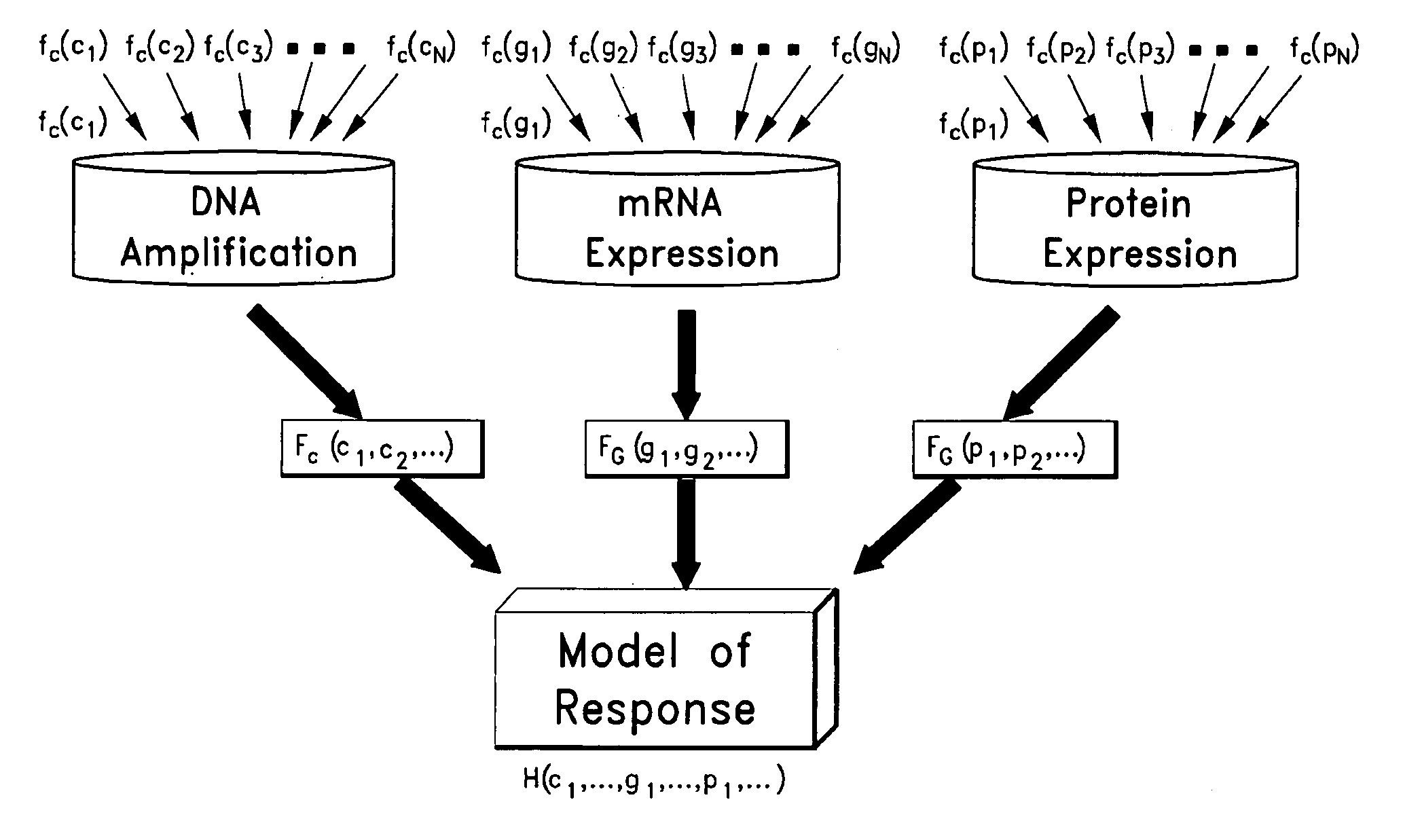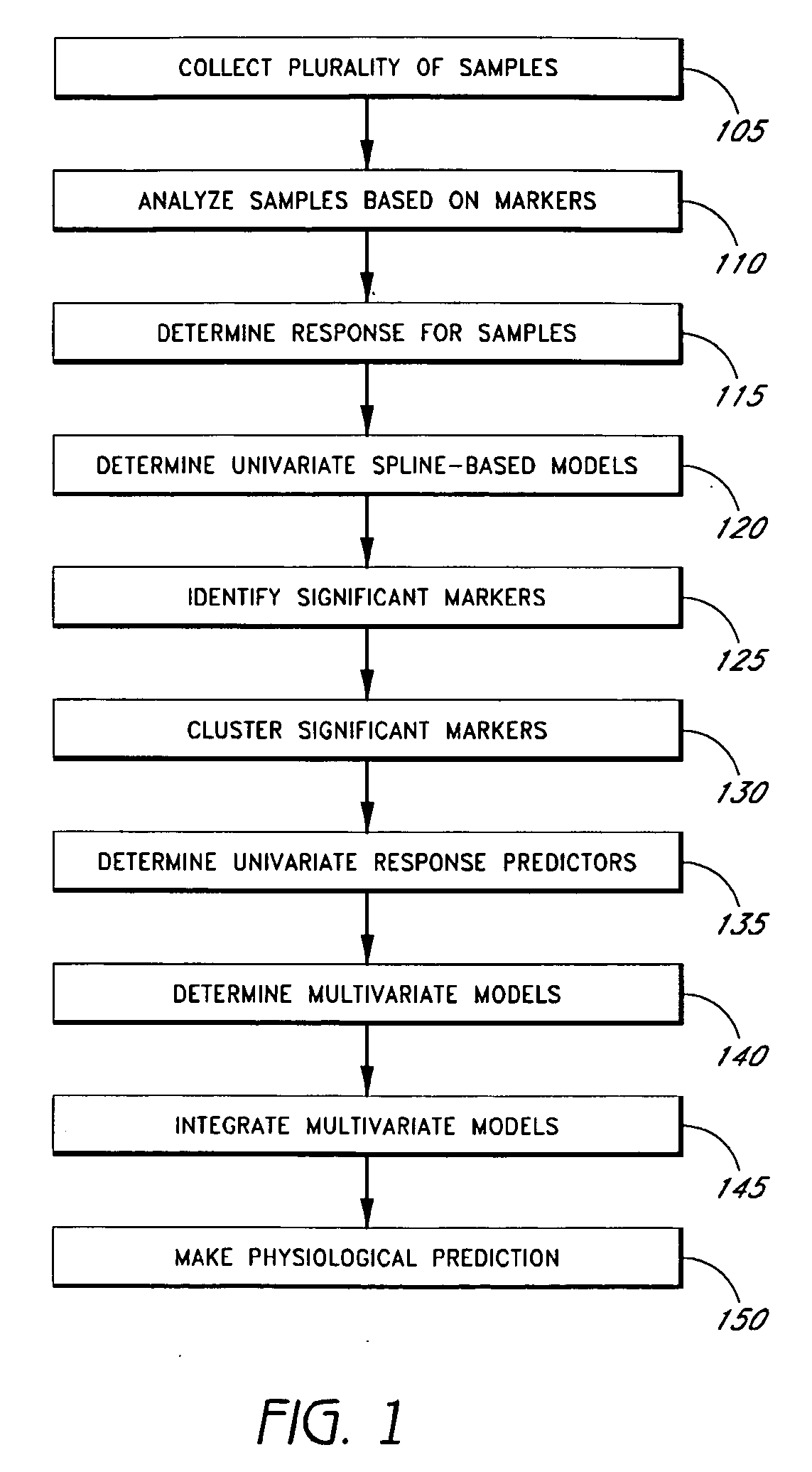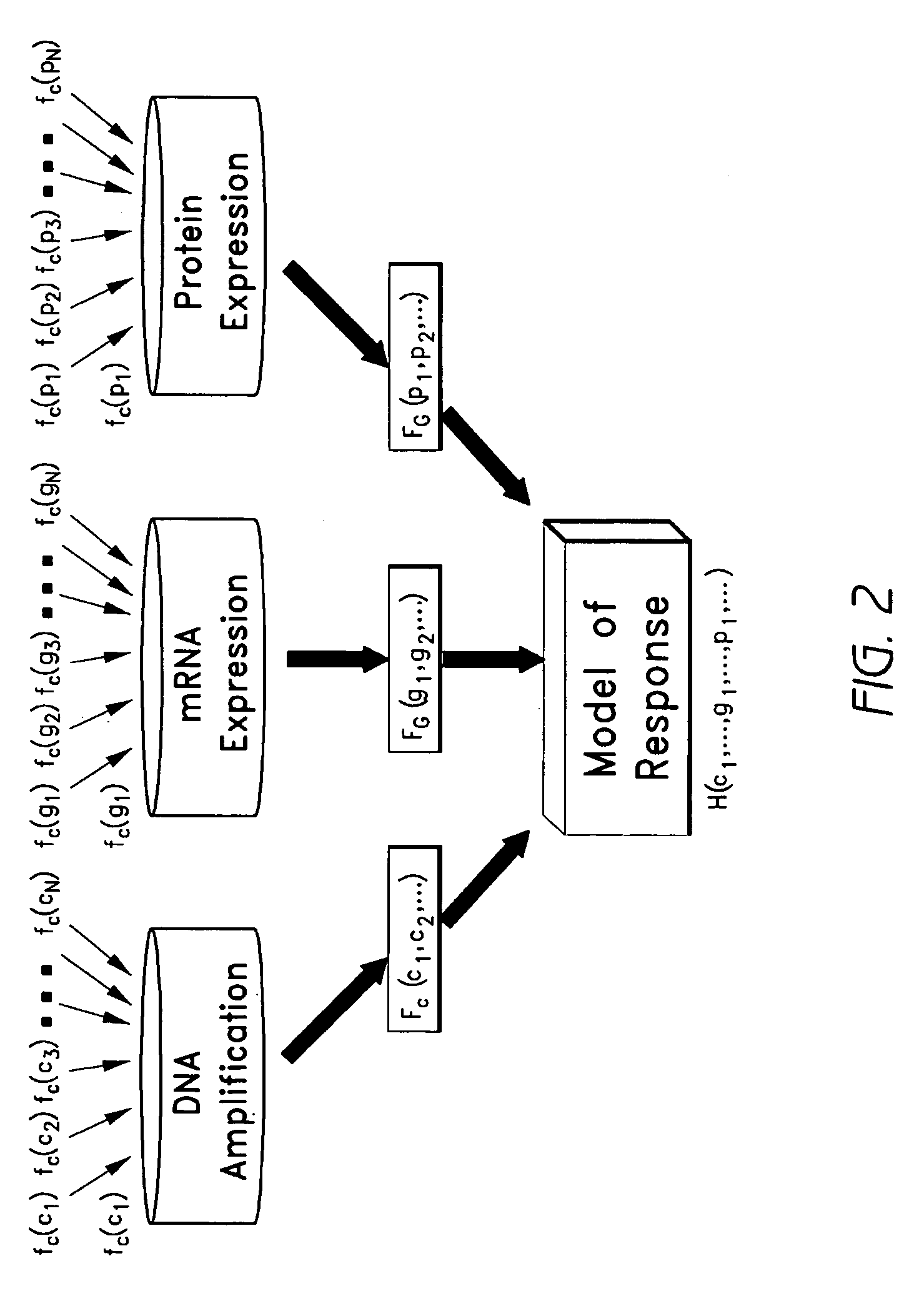Systems and methods for predicting response of biological samples
a biological sample and system technology, applied in the field of genetic technologies using spline functions, can solve the problems of exponential growth of r&d cost for discovering a new therapeutic agent, less than half of patients exhibiting clinical response or benefit,
- Summary
- Abstract
- Description
- Claims
- Application Information
AI Technical Summary
Benefits of technology
Problems solved by technology
Method used
Image
Examples
example 1
Fitting Using Linear Splines
[0112]The suitability of using linear splines as basis functions was tested using simulated datasets. Class-like structure of underlying response data has often been assumed while performing the analyses. The simulations helped us to evaluate the potential of different approaches in the context of this assumption for such small N. large P problems.
[0113]Expression data was obtained for a set of 1000 genes and 30 cell-lines by sampling from a normal distribution with μ=0, and σ=2. These parameters were held fixed. A gene g in the top half of the gene list by variance was randomly selected. The expression level of this gene, {Eg}, was then used to generate a model for log(GI50). Four different types of models were explored: (a) Two class model: Here the underlying model had a two class structure, viz. low expressing half of the cell-lines were assigned log(GI50)=5, and the rest were assigned log(GI50)=−5. (b) Linear model: Two random numbers between −1 and ...
example 2
5-FU Induced Apoptosis in Colon Cancer Cells
[0116]Univariate models. To benchmark process 100, it was first applied to the previously published dataset of 5-Fluorouracil (5-FU) induced apoptosis in 30 colon cancer cell-lines (14). Here, only mRNA expression profiles were available as baseline data. Therefore, step 145 of process 100 was not performed. Previous analysis of this dataset involved use of linear regression for univariate correlation, and principal components regression for multivariate modeling.
[0117]Using adaptive splines at the univariate level, a total of 48 significant genes that are predictive of apoptotic response (p≦1e-03, FDR=3.7%) (Table 1) were identified. Drug response data was modeled as sum of linear splines, where the predictor variables are DNA amplification, mRNA expression or protein expression levels.
TABLE 1Significant markers of response to 5-FU induced apoptosis. Comparison of various univariatetests is shown.Present inAdaptive linearLinearMariadasons...
example 3
Sensitivity to Lapatinib in Breast Cancer Cells
[0122]To evaluate the accuracy of a spline-based method as described herein when more than one type of baseline molecular profiles are available, the method was used to model sensitivity of breast cancer cells to Lapatinib, which is a dual inhibitor of epidermal growth factor (EGFR) and HER-2 (ERBB2) tyrosine kinases. DNA copy number changes and protein expression profiles were available, along with the mRNA expression profiles—for a highly characterized model system of breast cancer cell lines. Genome-wide mRNA levels were monitored using Affymetrix U133A arrays, DNA amplification using the array CGH technology, and protein levels using western blot assays. The dose response curves for a total of 40 breast cancer cell lines were determined using the CellTiter Glo assay, which measures cell viability. The response curves were used to estimate the GI50 value for each cell line, which were then used to perform the correlative analyses to ...
PUM
| Property | Measurement | Unit |
|---|---|---|
| heterogeneity | aaaaa | aaaaa |
| power | aaaaa | aaaaa |
| concentration | aaaaa | aaaaa |
Abstract
Description
Claims
Application Information
 Login to View More
Login to View More - R&D
- Intellectual Property
- Life Sciences
- Materials
- Tech Scout
- Unparalleled Data Quality
- Higher Quality Content
- 60% Fewer Hallucinations
Browse by: Latest US Patents, China's latest patents, Technical Efficacy Thesaurus, Application Domain, Technology Topic, Popular Technical Reports.
© 2025 PatSnap. All rights reserved.Legal|Privacy policy|Modern Slavery Act Transparency Statement|Sitemap|About US| Contact US: help@patsnap.com



